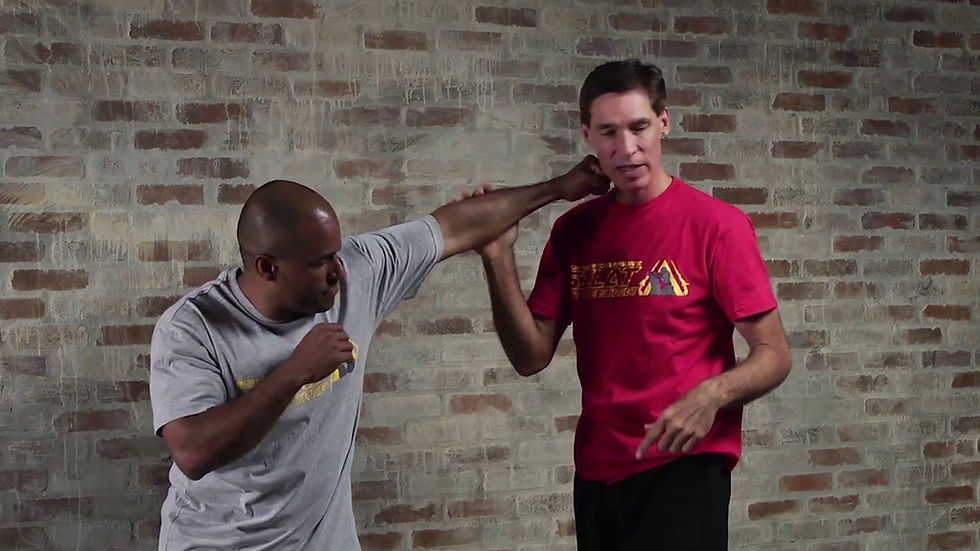10 Silat Consciousness-Expanding Strategies That Improve Your Self-Defense! Part 2
- Black Belt Team
- Sep 28, 2023
- 3 min read
Updated: Sep 28, 2023

In this Black Belt exclusive, Hall of Famer Burton Richardson reveals five more ways in which you can benefit from adopting silat's open-hand self-defense tactics.
In the first part of this post, Burton Richardson talks about the following silat self-defense principles:
It's easier to de-escalate a situation with open hands.
Open hands facilitate the use of more techniques.
Open hands make it easier to catch kicks.
It's easier to stop a weapon with open hands.
Use of a physical-restraint technique requires open hands.
In this part, he addresses five more.
— Editor

Silat Strategy No. 6: To parry an attack, the hands must be open.
Blocking punches is fine if your only goal is to avoid getting hit. However, if your goal is to neutralize the source of those punches, the beauty of silat parrying becomes apparent. Why? Because when you parry, you can counterstrike at the same time.
To execute a parry, your hands must be open. That's because you'll need to use a palm to divert that punch and thus create an opening for your counter. Yes, you'll need to spar a lot to fine-tune your timing, but once you do, you'll find that parrying affords you a higher level of defense than does blocking.
Silat for the Street is the title of a new book from Black Belt Hall of Famer Burton Richardson and Black Belt magazine. Now you can learn the most functional silat techniques. Get more info here!
Silat Strategy No. 7: Open hands foster a relaxed mind and body.
If you want to move at maximum speed, you must be relaxed. If you want to flow, you must be relaxed. If you want your mind to be pliable and ready to perceive all threats, you must be relaxed. Having your hands open relaxes your mind.
In contrast, closing them into fists tends to make your mind tight and your body tense. Because of this mind-body link, keeping your hands open is often the key to keeping yourself in a calm state that will optimize your overall fighting skill.
Silat Strategy No. 8: Feinting is more effective with open hands.
You may be thinking, How can this be? After all, feinting with a fist works very well, right? Yes, it does, but throwing an open hand as a feint presents your opponent with the perception that a larger weapon is incoming. That's because an open hand is larger than a closed fist.
Because of that difference in perceived size, feinting with an open hand makes your adversary think the blow is closer and, therefore, more of a threat. For that reason, it's likely to elicit a bigger reaction, which is exactly what you want from your feint. Remember that the bigger the reaction you get from your opponent, the bigger the opening for you to take advantage of.

Silat Strategy No. 9: Striking with open hands subjects the body to less danger.
You're less likely to hurt your hand when making contact with a palm than with a fist. If you have any doubts, look up “boxer's fracture" online. You'll learn that it's one of the most common injuries in street fighting — and even in boxing and MMA matches, in which athletes have their hands taped and wrapped with gloves.
Breaking a hand in an altercation likely will mean you can no longer strike with that hand or use it to grab your attacker. That's bad if you're a civilian. It's worse if you're a law-enforcement officer or military member because you might need to fend off a surprise attack before transitioning to a weapon.

Silat Strategy No. 10: Training is simpler with open hands.
I'm a big advocate of putting on helmets and gloves frequently to do safe sparring, but I also believe that you can safely spar with your open hands without all the gear. You'll want to wear a mouth guard and a cup to make sure face contact and groin strikes are options — remember that you're polishing your self-defense skills, not engaging in a combat sport — but you'll want to avoid wearing bulky boxing gloves. They'll prevent you from working on certain clinches and control techniques that require tactile sensitivity and the dexterity of an open hand.
For this reason, it's best to do some of your sparring without gloves. Focus on being functional with your open hands. You'll find it's fun and a great way to develop more options in your arsenal. And in real-world situations that may involve violence, you want your mind to have access to as many options as possible.


